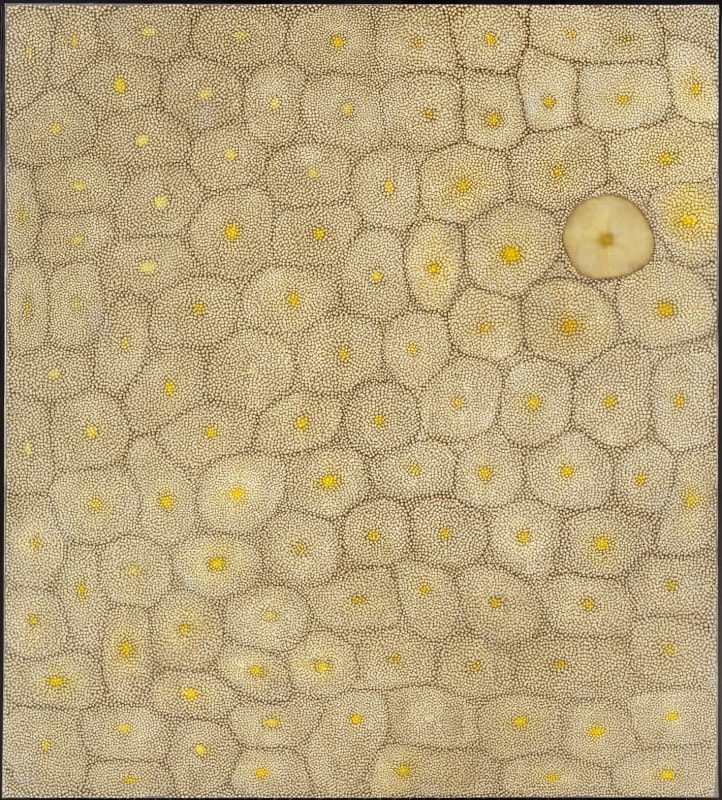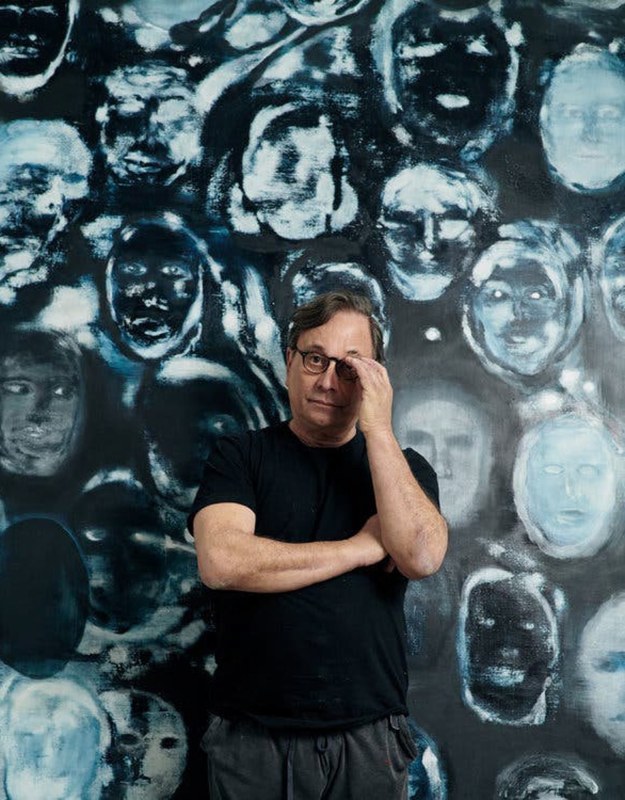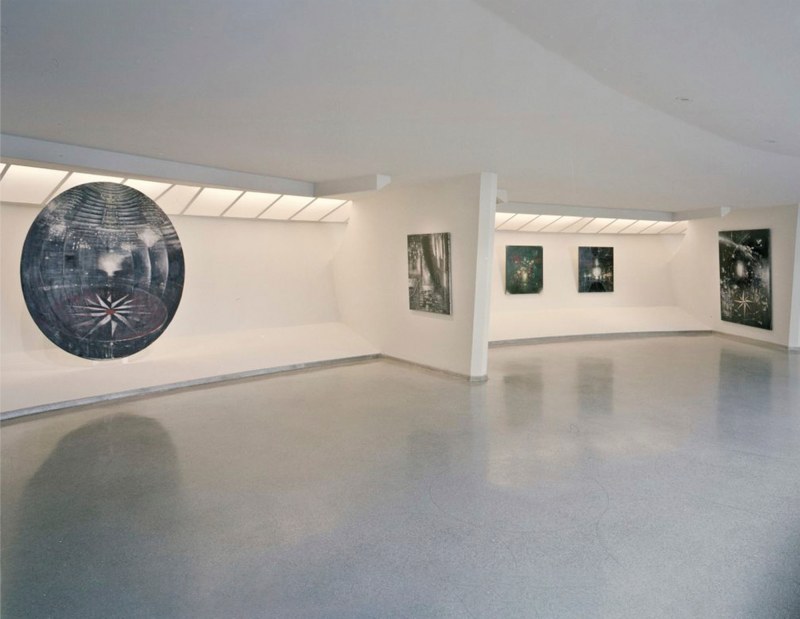
Ross Bleckner
Tolerance
1998
Oil on canvas
120 x 108 inches
304.8 x 274.3 cm

Ross Bleckner (b. 1949, New York, NY)
Emerging as a prominent artist in New York during the AIDS crisis in the 1980s, Ross Bleckner’s paintings are an investigation of change, loss, and memory, often suggesting meditations on the body, health and disease, much like a memento mori. “The idea that the body is so perfect, until it’s not perfect. It’s a fragile membrane that separates us from disaster.” His immersive paintings, whether pure abstraction of stripes or dots, or more representational renderings of birds, flowers, and brains, elicit a powerful hypnotic and dizzying effect. Smoothly layered on the canvas surface against a darker gray background, Bleckner’s famous multicolored volumetric circles or “cells” look like droplets of blood or molecules viewed under a microscope.
To this day, Bleckner is the youngest artist to receive a midcareer retrospective at the Solomon R. Guggenheim Museum, at the age of 45. His paintings can be found in several major museums, such as the Museum of Modern Art and in the Whitney Museum of American Art in New York, as well as numerous exhibitions, including at the San Francisco Museum of Modern Art, San Francisco; Martin Gropius Bau, Berlin; Reina Sofia, Madrid; L.A. County Museum, Los Angeles; Kunstmuseum Luzern, Luzern; and Zentrum Paul Klee, Ber.
Ross Bleckner’s work often touches on human vulnerability, evoking both the psychological struggles of the mind and the viruses that attack the physical form. He started his practice in the 1980s, when New York was in the grip of the Aids epidemic. He responded to this time through painting, and by starting an organisation which focused on alternative therapies and education. As he tells me, “that’s when I realised there are limitations to being an artist. You can say as much as you want to say, but some things you have to do outside your studio.”
Emma Steer on Ross Bleckner, Elephant, 2020

Installation view, Ross Bleckner, Guggenheim, 1995
1949 Born in Hewlett Harbor on Long Island
1971 Graduates with a BA in fine art from NYU. While at NYU, Bleckner studies with Sol LeWitt and Chuck
1973 Earns his MFA at the California Institute of the Arts where he meets and becomes friends with David Salle
1975 Cunningham Ward Gallery in New York hosts Bleckner’s first solo exhibition
1979 Begins showing with Mary Boone Gallery
1980 Begins his Stripe paintings which were inspired by the work of Bridget Riley
1984 Exhibits a large painting at New York’s East Village gallery, Nature Morte, attracting attention to his work
1987 Begins his Constellation series Participates in the Whitney Biennial
1988 The San Francisco Museum of Modern Art organizes his first solo museum exhibition. Begins his Architecture of the Sky canvases

Installation view, Overhead and Below, Neues Museum, 2019
1990 Begins his Cell series in response to the AIDS epidemic and referring to diseased human cells.
1995 the Guggenheim Museum hosts a midcareer retrospective of Bleckner’s work, making him, at the age of 45, the youngest artist to date to have a retrospective at the museum
2004 Opens the exhibition Dialogue with Space at the Esbjerg Art Museum in Denmark
2016 Presents his 16th solo exhibition at Mary Boone Gallery
2019 Exhibits for the first time with Petzel Gallery
Has an exhibition at the Neues Museum in Germany
2020 Albertina Museum highlights works from the Jablonka